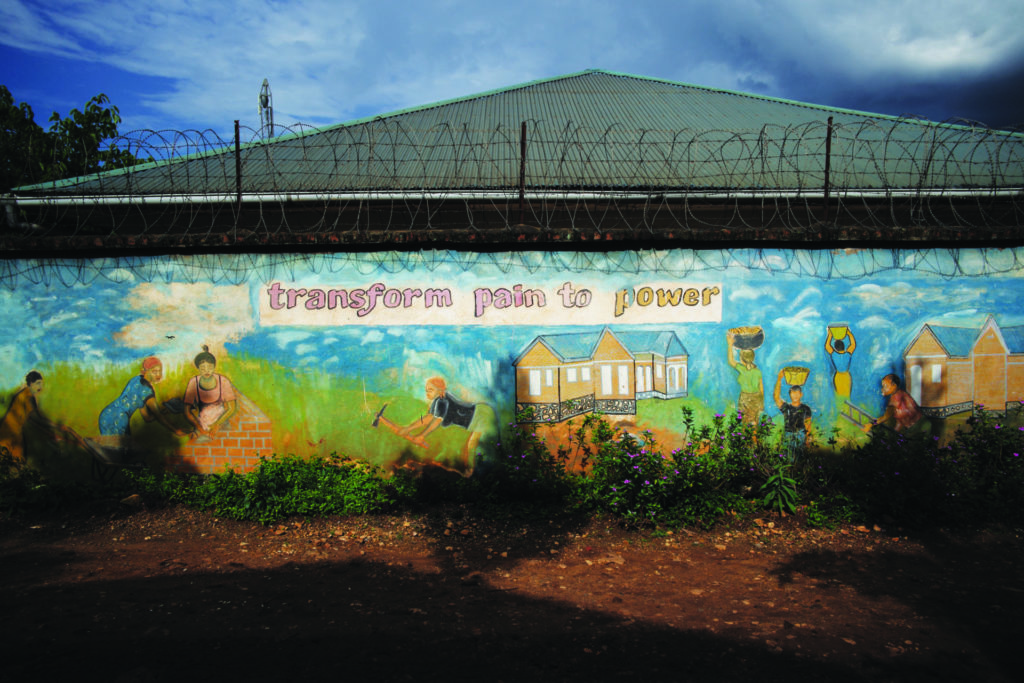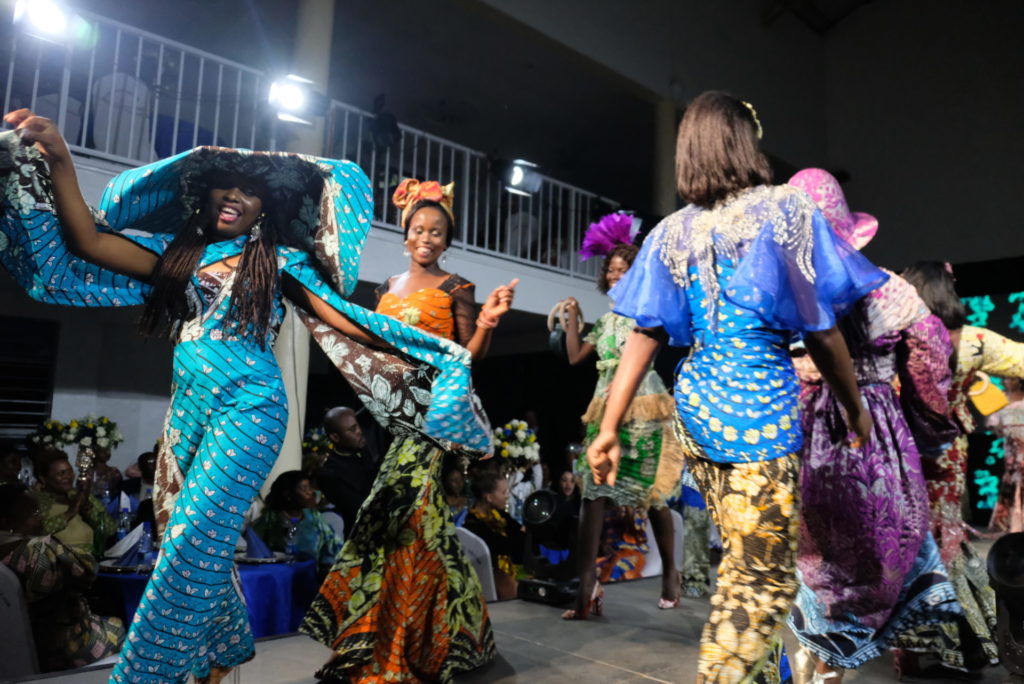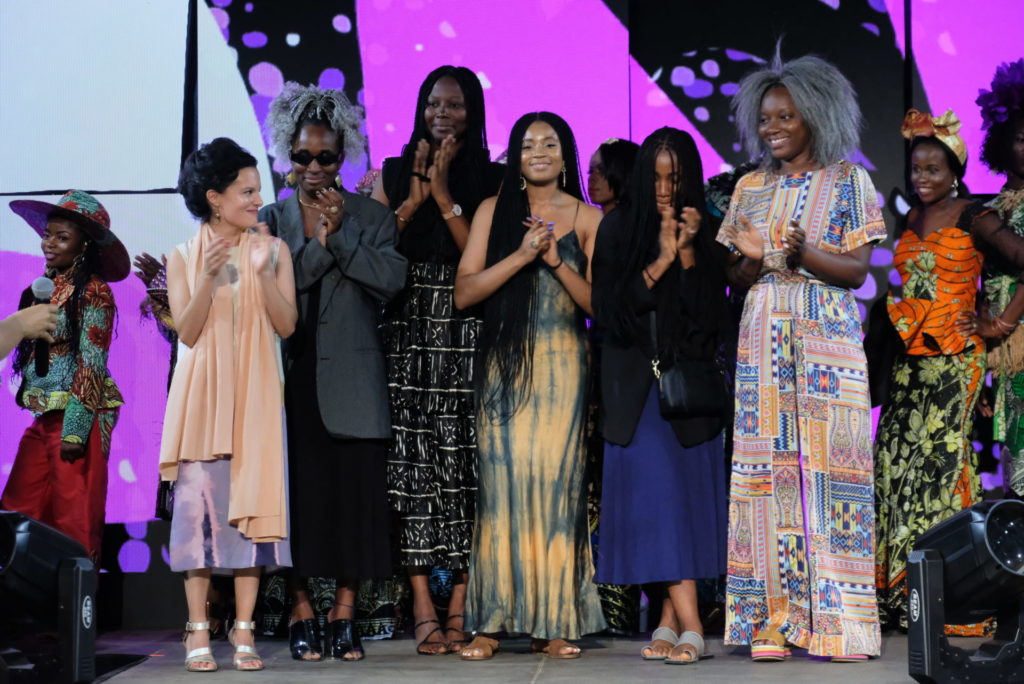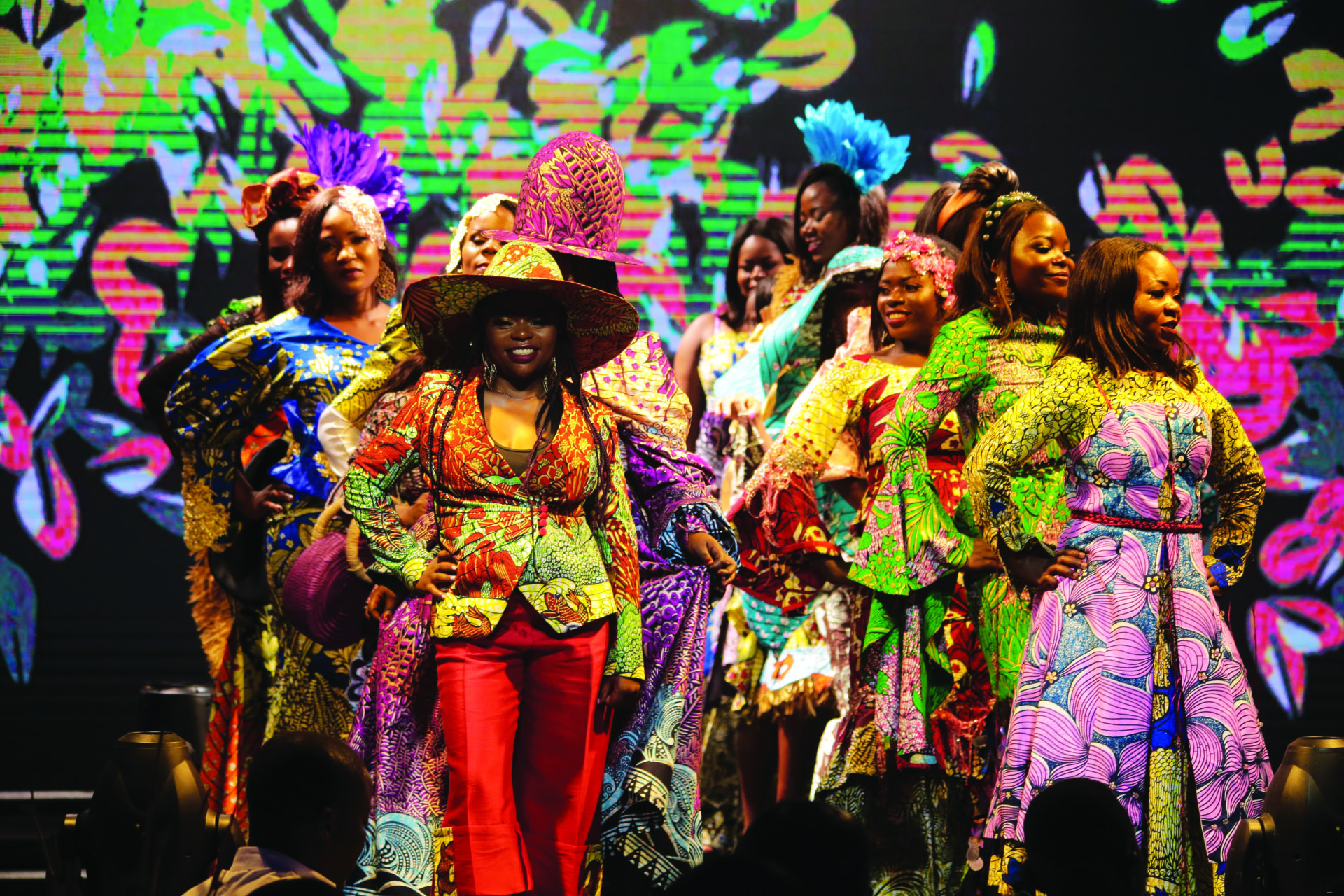The power of fashion as a tool for social change is being realized in a tiny town in the Democratic Republic of the Congo, where suffering is being swapped with style and self-worth.
Deep in the eastern Democratic Republic of the Congo (DRC), lies the town of Bukavu, home to a community of women survivors of violence.
Since it first opened its doors, this transformational leadership community called the City of Joy, has graduated 1,380 women leaders. Here, women are healed from their past trauma through therapy and life skills programming and provided with essential ingredients to move forward in life, supported by love and community.
The program welcomes 90 survivors of gender violence aged between 18 and 30 at a time.

Recently, specialist Dutch fabric maker, Vlisco, was asked to create a fashion collection to honor the women of the City of Joy and the surgeon who works with them, 2018’s Nobel Peace Prize winner Dr Denis Mukwege.
Five international designers worked with 15 City of Joy graduates to create a collection of empowering and personalized garments using new fabrics.
The fabrics consist of five traditionally printed super-wax patterns incorporating 100 different, vivid colors.
The collection was showcased at a gala event in front of a global audience in Kinshasa in November last year to mark the International Day for the Elimination of Violence Against Women, and all proceeds from the sale of the collection donated to the City of Joy.

David Suddens, CEO of Vlisco, told FORBES WOMAN AFRICA that the five international designers, all African women, were keen to join the company’s efforts to help the women of the eastern Congo.
“They were immediately engaged even though they were not initially aware of the City of Joy and the scale of the rape and brutality. Once they had met the women, they formed a bond of love and respect.”
Suddens continues: “It was a real pleasure to work with the five designers; they not only created and made the garments in a very short period of time, they flew great distances to be with the women (one interrupted her family vacation in the United States to be in the DRC) and they made a huge impact on the women they designed for. The bond was palpable.”
The designers wrote to Suddens and Gabriela Sanchez, a Mexican Dutch designer and head of creative projects at Vlisco: “Thank you so much for changing not only our lives this year with this experience but also thank you for connecting us with these amazing women, with compelling stories and divine souls. You’re both a blessing to us.” The founder of City of Joy, Christine Schuler, told Suddens and Sanchez that many people visit the community, but “nobody has understood us like you have”.
“The beauty of the Congolese landscape is depicted; its river, its forests, its nature. From the dark roots of the forest, slowly flowers start to grow, butterflies appear, birds are in the sky and the sun is glimpsed behind the clouds.
Asked about the impact of the designs and this collaboration on the community, Suddens says: “The designs are related to the lives and suffering and hope and courage of the women in the City of Joy. You needed to see their faces light up when they first saw the designs. They were overjoyed.”
The main stories expressed in the fabric designs are fundamentally about the journey from pain to power.
“The designs, at the bottom, are somber, twisted, even menacing. But, as the eye moves upwards, there is gradually more light and the images symbolize hope and respect and love,” Suddens explains.
“The beauty of the Congolese landscape is depicted; its river, its forests, its nature. From the dark roots of the forest, slowly flowers start to grow, butterflies appear, birds are in the sky and the sun is glimpsed behind the clouds.
“In one design sits a lion, dignified and rather sad, symbolizing Dr Mukwege. In another, sisterhood is portrayed, with intertwined threads joining ‘hands’ as they grow lighter but stronger. And two designs depict the beauty of the vagina, full of flowers against the dark background of the universe.”

FORBES WOMAN AFRICA also spoke to international designer Aisha Ayensu, the founder and creative director of fashion brand Christie Brown known as a player in the rise of contemporary African fashion since its inception 11 years ago.
“This project gave me first-hand insight into how fashion can be used as a tool for social change but most importantly, meeting these remarkable women, sharing in their joy and appreciating where they’ve come from and their journey from pain to power has completely altered the way I view my work and my purpose,” says Ayensu.
She recalls her experience in Kinshasa as magical. “It was important that the gala event highlighted their power and recovery more than the atrocities the women faced, but all the same, raising awareness of what may still be going on and how we can help stop violence against women.”
“I had an experience with one of the ladies in Bukavu, when she did her first fitting… The sheer joy and excitement on her face when she saw her outfit and exclaimed in local language ‘for me?’ In disbelief. When she put it on and saw a picture of herself, she started to cry tears of joy and also started saying ‘is this me, today look at me, I am also somebody’. That reaction was priceless. When fashion and design is deliberate and well thought out, it has the power to elevate a woman in ways you can’t imagine.”
Added Suddens: “Never could they have imagined wearing their own designs made into garments by African designers. To understand, you need to see their faces. You need to see them literally dancing with joy.”
-Jill De Villiers
